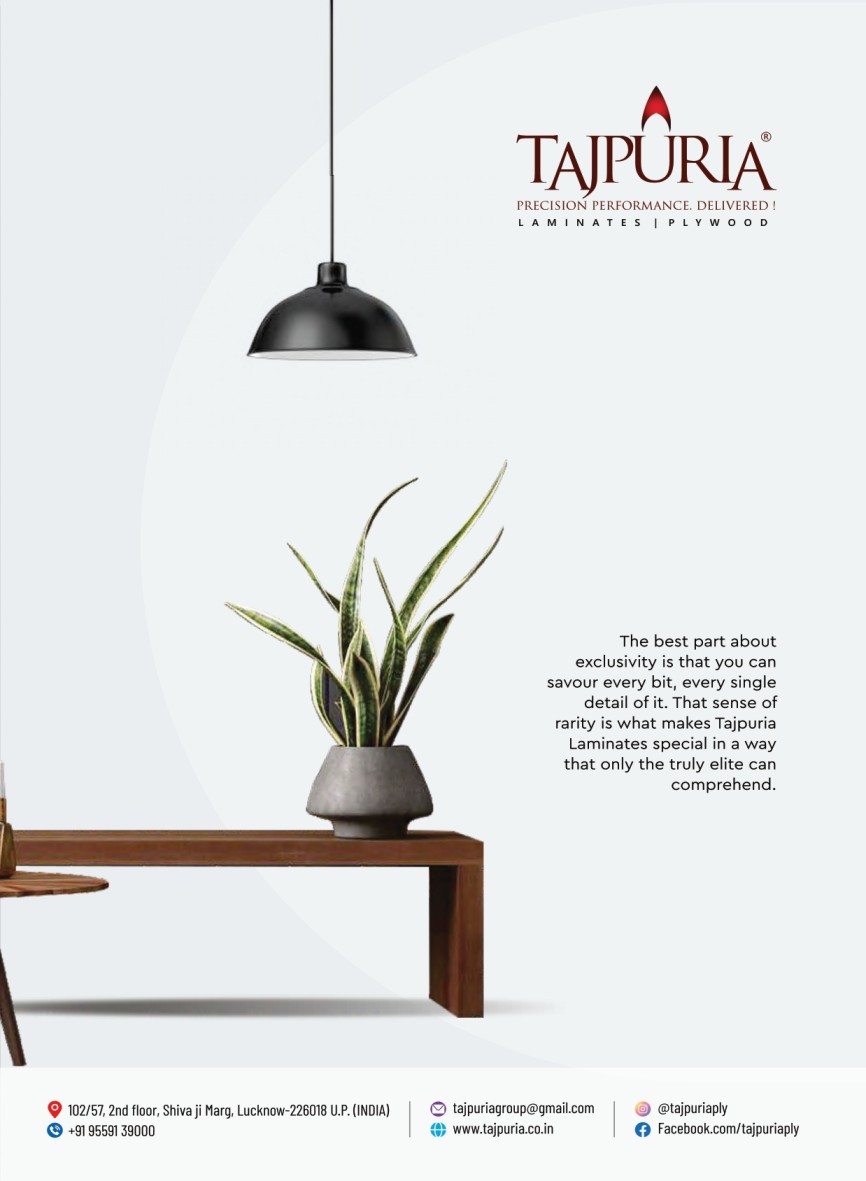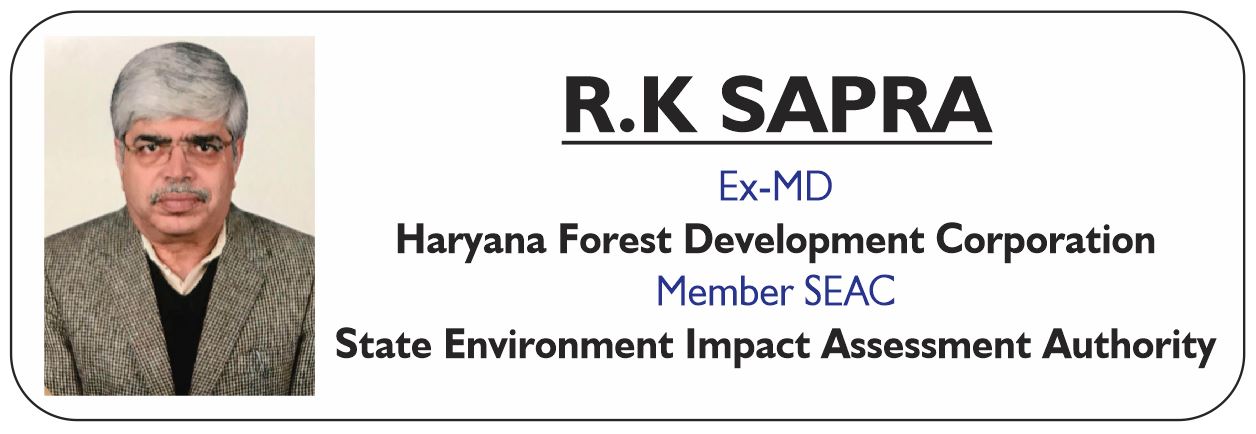
Farming of Clonal Eucalyptus in Alkaline Soils
- November 27, 2023
- 0
The Raina Farm: A Transformation
This article delves into the success story of Ranjit Raina, whose determination led to the introduction of clonal eucalyptus in the challenging soils of Haryana. Ranjit Raina, inheriting 200 acres of land in Saleempur village, Kurukshetra district, transformed his family’s farm into a beacon of innovation. This land, with its clayey soil and pH variations ranging from 9 to 10, presented unique challenges. While traditional agro-forestry models thrived in regular soil, they faltered in these alkaline soils. Raina’s vision was to adopt an agro-forestry model that demanded less water, reduced labour input, and increased profitability.
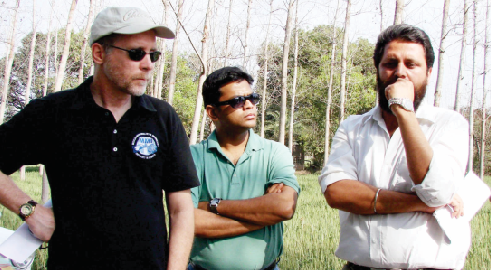
The Clonal Eucalyptus Experiment
In November 2001, Ranjit Raina reached out to me for guidance on implementing clonal eucalyptus cultivation in alkaline soils. Discussions with Piare Lal, the former Vice President of ITC Bhadrachalam Ltd., revealed that selecting appropriate clones for cultivation in high pH soil (outside the standard range of 7.5-8.5) was a challenge. Nine promising clones, initially successful in mildly alkaline soils of Andhra Pradesh, were identified for testing on Raina’s farm. Piare Lal, owner of Pragati Biotechnologies, facilitated the acquisition of clonal plants from ITC-Bhadrachalam Paper Boards Ltd. in Andhra Pradesh. The selected clones were planted in November 2001, arranged at a spacing of 16ft x 14ft across a 2.75-acre plot. The performance of these clones after six years is documented in Table-1.
Table-1: Performance of Bhadrachalam Clones:-
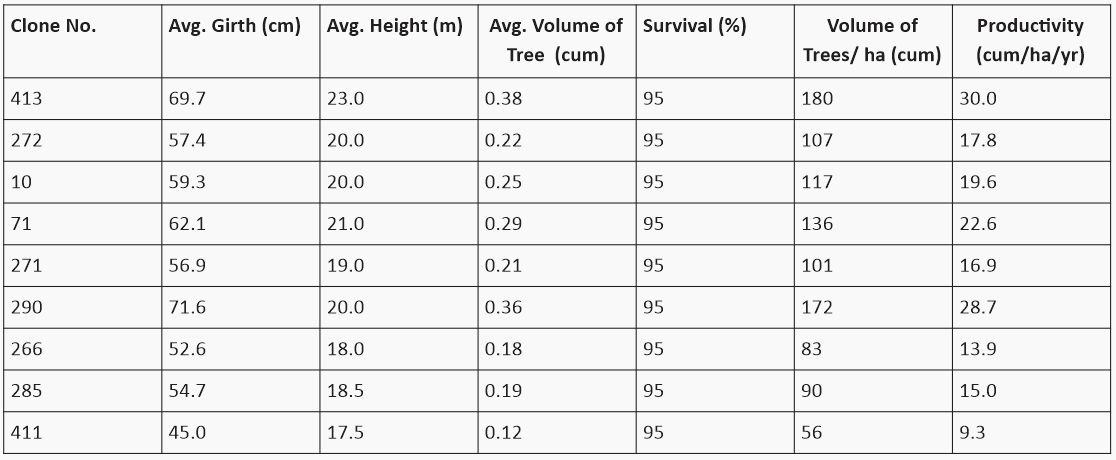
The data in Table-1 indicates that after six years, clones 413, 290, and 71 exhibited productivities exceeding 20 cum/ha/yr. The productivities of clones 10, 272, 271, 285, and 266 ranged from 10-20 cum/ha/yr, while clone 411 exhibited productivity of less than 10 cum/ha/ yr. Clone 413 emerged as the top performer, yielding 30 cum/ha/yr, thus becoming the prime candidate for continued cultivation.
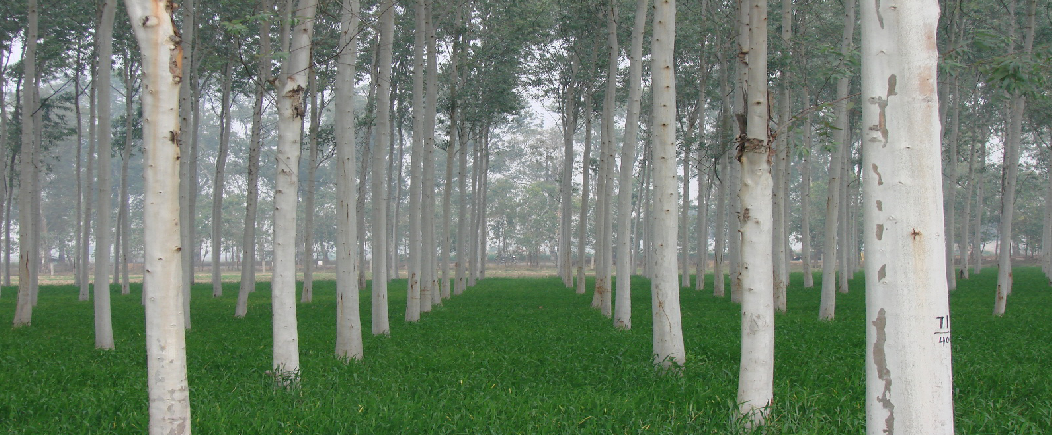
Agro-Forestry Dynamics and Sustainability
Initially, sugarcane was cultivated alongside clonal eucalyptus for two years. Subsequently, wheat was cultivated in the winter and dhaincha (Sesbania bispinosa) in summer, in conjunction with clonal eucalyptus. The intercrop yields gradually decreased with the maturity of tree crops. Notably, the incorporation of dhaincha as green manure ameliorated soil pH to around 8.5.
Table-2: Productivity (tonnes/ha) of Irrigated Agro-Forestry Models
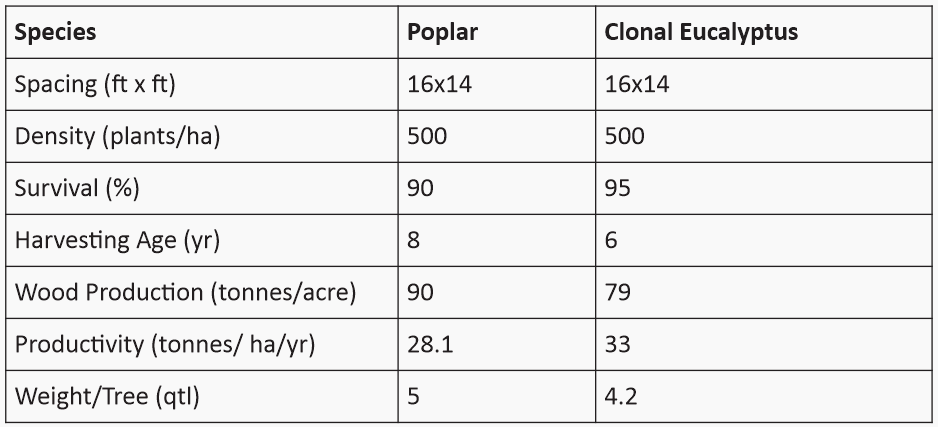
Table-2 displays the productivity of clonal eucalyptus plantation at six years, surpassing that of poplar plantation over an eight-year period. Moreover, Table-3 illustrates the distribution of farm trees into various marketing classes of wood.
Table-3: Distribution of Farm Trees in Marketing Classes of Wood

It is apparent from Table 3 that the proportion of oversize timber, which is generally more costly, is higher in poplar trees (50%) compared to clonal eucalyptus trees (35%). On the other hand, the percentage of sokhta and fuelwood, which are less expensive types of wood, is lower in poplar trees compared to clonal eucalyptus trees. Additionally, it was observed that 8 quintals of poplar wood and 11 quintals of eucalyptus wood constitute one cubic meter of their respective wood.
Profitability
It was found that the profitability of poplar plantation of eight years surpassed that of clonal eucalyptus of six years by 25%. This difference could be attributed to factors such as better soil quality, an extended harvesting period, and higher wood-selling rates for poplar. Ranjit Raina further experimented with different spacings, discovering that a clonal eucalyptus agro-forestry model with a spacing of 12ft x 12ft and a rotation period of 7 years yielded the highest profitability.
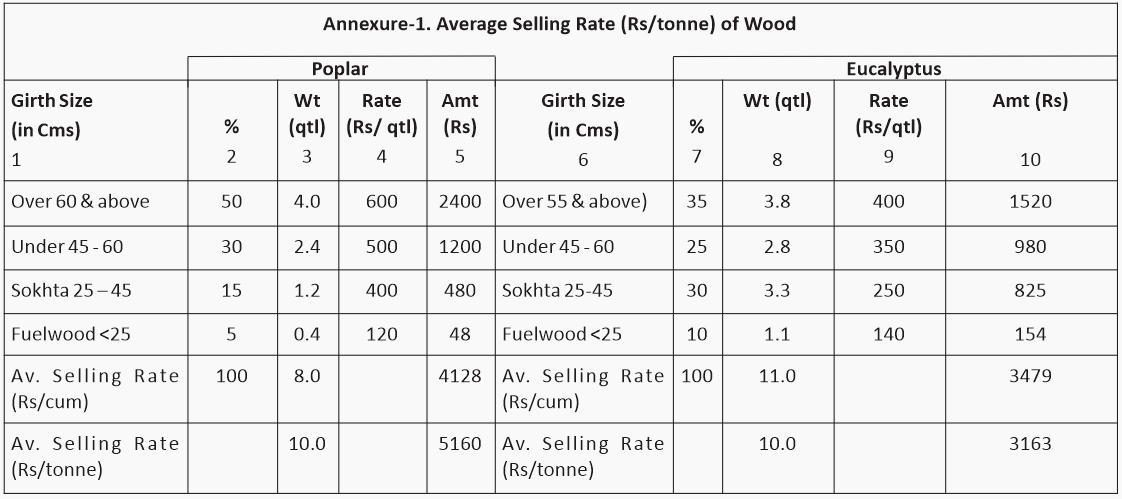
Socio-economic Impact and Sustainability
Ranjit Raina’s farm became a nucleus of transformation, providing employment for approximately 18-20 permanent workers. Outsourced services for planting, harvesting, and transportation further contributed to the local economy. The farm’s ecosystem also flourished, with an influx of peacocks, avifauna, and the Boselaphus tragocamelus (nilgai). Beyond the financial gains, the clonal eucalyptus agro-forestry model enhanced soil quality, reduced cultivation risks, and was adaptable to varying water conditions.
This successful model inspired neighbouring farmers, driving them to adopt clonal eucalyptus cultivation on their lands. The concept of multi-cropping, encompassing grains, poplar, and eucalyptus, emerged as a means to simultaneously produce woodand food. These agro-forestry models offer a solution to meet future wood demands without compromising food production. Additionally, they act as a buffer against climate change impacts, safeguarding food crops from heat waves and landscape degradation.
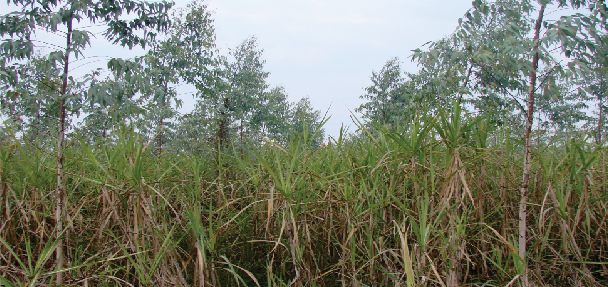
Conclusion
Ranjit Raina’s pioneering efforts demonstrate the potential of clonal eucalyptus cultivation to thrive in alkaline soils, transforming both land and livelihoods. The adoption of innovative agro-forestry models not only enhances economic returns but also bolsters ecological sustainability. This case study stands as a testament to the power of determined individuals to create sustainable, resilient agricultural systems in the face of challenging circumstances.













